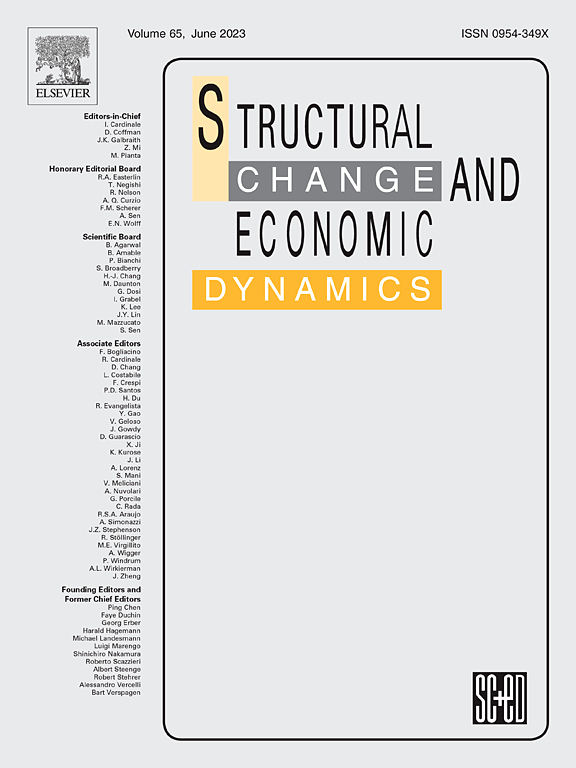A model of maximum employment growth with a one-third profit share
IF 5.5
2区 经济学
Q1 ECONOMICS
引用次数: 0
Abstract
The economies of the European Union and the United States have been predominantly wage-driven in recent decades, according to most empirical studies on the Bhaduri–Marglin model (1990). Nevertheless, since the 1980s, European governments have operated under the neoclassical belief that full employment can be achieved by reducing labour costs and increasing the profit share of income, a strategy that has proven effective, though the reasons remain a mystery (Storm and Naastepad, 2017). How could this happen? To explain these developments, the proposed new model of growth and distribution integrates the principles of chain reaction, creative destruction, effective demand, and the significance of income distribution, as outlined by Kaldor, Schumpeter, Keynes, and Ricardo, respectively. It has been theoretically demonstrated that employment growth reaches its maximum when profit share accounts for one-third of income. This relationship is illustrated by the evolution of the U.S. economy throughout the 20th century and by 17 advanced economies since 1961, the earliest year for which precise data is available. Thus, wages drive output and productivity growth, while employment growth is driven by the profit share when it is below the one-third threshold, and by the wage share when it exceeds that point.
一个以三分之一的利润份额实现最大就业增长的模型
根据对Bhaduri-Marglin模型(1990)的大多数实证研究,近几十年来,欧盟和美国的经济主要是由工资驱动的。然而,自20世纪80年代以来,欧洲各国政府一直在新古典主义的信念下运作,即充分就业可以通过降低劳动力成本和增加收入的利润份额来实现,这一策略已被证明是有效的,尽管原因仍然是一个谜(Storm和Naastepad, 2017)。这是怎么发生的?为了解释这些发展,新提出的增长和分配模型整合了连锁反应、创造性破坏、有效需求和收入分配的重要性等原则,这些原则分别由卡尔多、熊彼特、凯恩斯和李嘉图提出。理论上已经证明,当利润占收入的三分之一时,就业增长达到最大。美国经济在整个20世纪的演变,以及自1961年以来17个发达经济体(1961年是可获得精确数据的最早年份)的演变,都说明了这种关系。因此,工资推动产出和生产率增长,而就业增长是由利润份额驱动的,当它低于三分之一的门槛时,由工资份额驱动,当它超过这一点时。
本文章由计算机程序翻译,如有差异,请以英文原文为准。
求助全文
约1分钟内获得全文
求助全文
来源期刊

Structural Change and Economic Dynamics
ECONOMICS-
CiteScore
9.60
自引率
4.90%
发文量
159
期刊介绍:
Structural Change and Economic Dynamics publishes articles about theoretical, applied and methodological aspects of structural change in economic systems. The journal publishes work analysing dynamics and structural breaks in economic, technological, behavioural and institutional patterns.
 求助内容:
求助内容: 应助结果提醒方式:
应助结果提醒方式:


